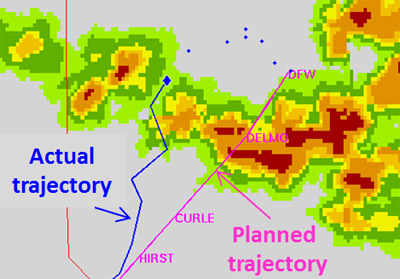Even the winds stop to stare at their daring acts. The formation aerobatic team and their gravity-defying feats at zipping speeds. Loop, barrel rolls, rolls, clovers, roll of top and hard turns every manoeuvre that is hard to fathom is done in perfect precision and position. In this article, we will meet one of the members of this team. I freely admit that learning this stuff is tenuous and demanding – even harder than being married. Two aircraft close formation – which is much easier and simpler would give me neck and shoulder ache along with frequent cramps. Coming back to formation aerobatic display – it looks easy and graceful like an aerial ballet. But each member is like that serene swan padding madly below the surface to keep the position. Behind every show, there is rigorous training, diligence and spectacular teamwork. Formation aerobatics team is the pride of any air force and a true test of a fighter pilot’s abilities of concentration, coordination, grit and unflinching nerves. Here, I hand you over to Gp Capt Sanjiv Sethi (Retd) to unravel the mysteries of formation aerobatics while I will try to maintain close with him.
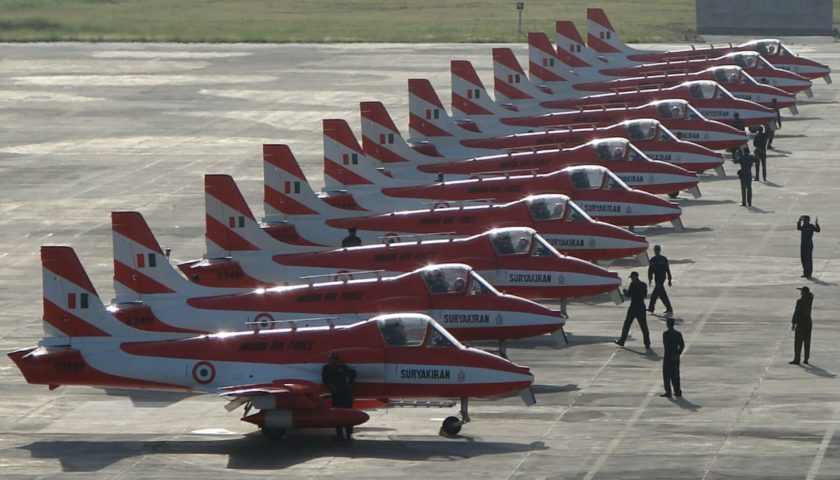
- What is formation aerobatics? Which countries have formation aerobatic teams and what is the purpose of these teams?
Ans. Many Air Forces, some Navies, and even a few private organizations have air display teams. These teams perform in domestic and international airshows. The French Air Force aerobatic team Patrouille de France, established in 1931, is the earliest flight demonstration team. The demonstration was executed by instructors of the Piloting Perfection School, on Morane-Saulnier MS.230 aircraft. Through its long journey from being a 2-3 aircraft demonstration team, it has graduated to an eight aircraft precision team displaying all over the world in the major air shows. Presently the team flies the Alpha jet. Some of the other teams are the RAF Red Arrows which is a nine aircraft display team and flies the Hawk. The USAF, US Navy, Canadian Air Force and many other countries have display teams.
A word about the Indian Air Force team- during the golden jubilee year of the IAF in 1982 a team was formed on the Hunter aircraft, called the Thunderbolts. It last displayed in 1989 shortly before the phasing out of the Hunter aircraft. Then in 1990, a team on the Kiran trainer Jet was formed at Air Force Station Bidar called Formation Aerobatic Team. It first displayed in 1992 and it was christened as Surya Kiran Aerobatic Team in 1996. It initially formed as a six aircraft team and upgraded to nine aircraft status. Presently the team flies the British Hawk Jet.
The team displays at various locations in the country and also during the Air Force Day ceremony on 08 October at Air Force Station Hindan. The purpose of these teams is to showcase the Air Force, its skills and to motivate the public at large towards the Armed Forces. It also aims at motivating the youth to be part of this elite force.
- What is the distance between the aircraft during formation flying and what is the aircraft speed? What references do you have to maintain position?
Ans. The distance between two aircraft in close formation is close to one wingspan which for the Kiran aircraft is around 7 meters and almost similar for the Hawk. But it could be slightly different depending on the team and their training philosophy. To maintain position there are certain markings on the aircraft like vertical or horizontal paint markings or cues taken from aircraft parts like the rudder or the wingtips etc. This once again is based on the training pattern for close formation flying for that organization. On the Kiran aircraft, the speeds were in the range of 300 Kmph to 450 Kmph, however, on the Hawk it is in excess of 500 Kmph. The US Navy which flies the F- 16 flies at around 700 Kmph. The speed does not necessarily have much effect on the Visual Appeal. With higher speeds the radius of turn and distance flown in a particular direction increases and chances of the audiences losing sight of the aircraft. This is where the commentator comes in and he/she would normally guide the audiences in spotting the aircraft by assisting them to look out in a certain direction. Even more effective at this juncture is the coloured smoke emitted by the aircraft which keeps the aircraft visible at larger ranges and certainly enhances the visual appeal.
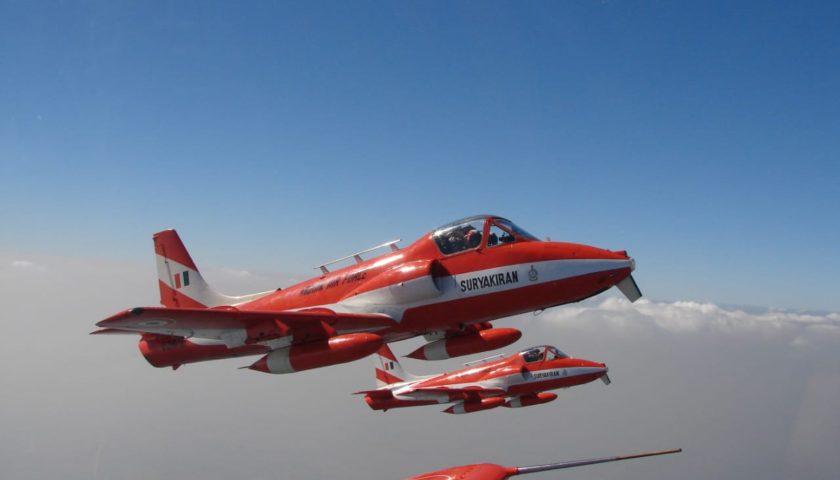
- During close formation, it is the constant application of controls and power management as well as anticipation which is required to maintain position. Could you please elaborate?
Ans. Maintaining position in close formation aerobatics comes with a lot of practice. Constant use of power and control inputs is necessary since the aircraft you are formating on is constantly changing its direction, speed, bank or pitch angle. So the datum itself is not constant hence the formatting aircraft has to adjust these parameters accordingly to maintain a constant relative position. This requires constant inputs of controls and power. The key here is anticipation. The earlier you anticipate, the lesser the input required and smoother will be the correction. On the other hand, if anticipation is late, the correction required is larger. This anticipation comes with practice and also the knowledge of the profile that is being flown so you know exactly what is coming next and how the formation is going to manoeuvre.
- What is the selection criteria and flying experience required to be part of such a team?
Ans. Different selection procedures are followed by various teams. Rotation of pilots in SKAT happens every 6 months. Two pilots are routed back to their operational squadrons and two are inducted. Air HQs sends out communication for pilots of fighter stream with flying experience of more than 1000 hrs to apply for SKAT. The volunteers’ profile is studied and some among them who have had an above-average grading in flying are recommended to undergo a selection process with the team. The selection process is not just about the flying skill which is very important, but it is also about compatibility and faith in others. He should have complete faith in other members and vice-versa while flying in such close proximity and manoeuvring the aircraft almost to its limits. There is not much scope for error from any of the team pilots. After the selection process, the pilot is posted as a member of the team. And now starts the tough journey of training to a formation aerobatic pilot.
- The basic training of close formations starts during the flight cadet days. This is where you learn to manoeuvre as a pair. What are the different positions that you maintain in a two aircraft formation? What are the typical manoeuvres done?
Ans. Training for position keeping in close formation in two aircraft starts at the basic stage and is practised throughout your flying career. In fighter flying, one has to be proficient in this as it has operational significance. Pair Take-Offs, firing of certain weapons in close formation, an inspection of aircraft in the air and shepherding aircraft with certain failures are some of the operational reasons. But it is limited to two aircraft formations and the manoeuvring is restricted to flying straight and level or gentle turns in different configurations. The aircraft formating maintains on the port or starboard side which is referred to as port or starboard echelon positions. The other position to maintain right behind or 6 ‘o’clock to the lead aircraft which is referred to as Line Astern position. So one has to be proficient in flying in close formation.
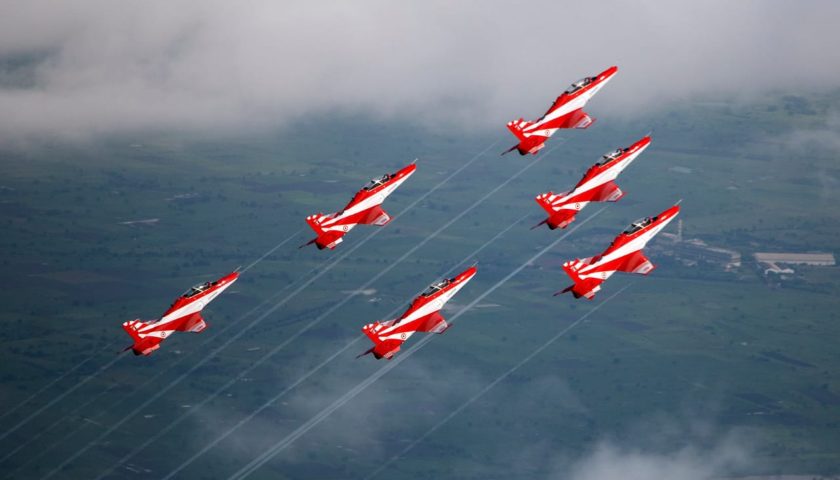
- This must be easy compared to formation aerobatics. What is the most demanding position and what is the most difficult manoeuvre?
Ans. Formation aerobatics is certainly more demanding than basic two aircraft close formation. It requires lots of practice and thus a rigorous training schedule is in place to train the rookie pilots for this task. The training is exhaustive and is well structured over the years. Display flying involves aerobatic manoeuvres at low levels, something the IAF pilots haven’t been exposed to in the fighter squadrons. So the training starts with aerobatic manoeuvres as a single aircraft at low levels and once proficient the pilot is advanced into formation aerobatic flying. Initially two aircraft, and gradually building up to nine aircraft. Here I would like to say that in the initial stages of the conversion syllabus the best of the guys start to have doubts about their flying skill. It could take up to a year for the training to finish depending on the commitments of the team and the progress of the pilot. On completion of the training syllabus and having achieved the required standards the pilot is certified to undertake public displays and the first public display is what one awaits. Some get lucky and get to fly their first public display soon after the syllabus is over while some have to wait longer due to posting schedules and display season etc.
The most difficult position to fly- well all positions are extremely demanding. The inner members formatting on the lead aircraft need to be smooth as there are outer members formating on them. The outer members are formatting on the inner ones so their position keeping is more dynamic. In SKAT the philosophy followed is that one starts as an outer and with experience graduates to an inner. So the inner has to gentle and the outer dynamic.
- How is 2 aircraft formation different from formation aerobatic team flying?
Ans. Like was discussed previously two aircraft close formation flying is for operational reasons and pilots need to be proficient in close formation flying. In formation aerobatics, however, since the number of aircraft are more (usually 6 to 9) and the manoeuvres more dynamic the degree of difficulty is substantially higher. The skill required and the precision/position keeping needs to be of a much higher standard for better visual appeal. Also, each member has to be conversant with the various formations, the profile being flown and the calls for position changes. This should be so ingrained in the pilots’ mind so that the chances of error are reduced to a bare minimum. There are environmental conditions which play a significant role at times. While flying at low levels in India, during summers there could be turbulence which is problematic.
All these variables have to be catered to and thus each display sequence is unique All these variables have to be catered to and thus each display sequence is unique even though the profile flown could be exactly the same. Despite doing more or less a similar sequence and profile so often, never ever can you take it lightly. In nutshell, formation aerobatic flying is a totally different ball game.

- Do you remember the first time you did formation aerobatics? Can you describe the experience?
Ans. Well, to be honest, I do not vividly remember the first time I did formation aerobatics because that was during my syllabus and it was the basic two aircraft formation. I do certainly remember that it was challenging and keeping position was much tougher than I had imagined. It all looks so simple as a spectator. Trust me, even as an experienced pilot it takes a lot of effort to achieve the standards required of a qualified formation aerobatics pilot. Each aircraft also has its own intricacies, like the Kiran is not very powerful and so when you are formatting, especially as one of the outer members, the reserve of power is almost nil, which means that the power management and control inputs have to be fairly precise, or else you run out of power and fall out of position. This is something one gradually overcomes and that is what the training syllabus is meant for.
I certainly remember the first time I took part in a public display. It was the POP at Air Force Academy. I was flying no. 5 (left outer). It is one of the most cherished moments for any team pilot. It is like a cricketer winning his Indian cap. There are nerves when you are starting the aircraft and taxiing and even after Take-Off. Once the display routine starts you get sucked into it and the training kicks in.
So that was my experience.
- What kind of preparation do you do before a display?
In the IAF, the display season is mainly cantered around Air Force Day i.e. 08th oct. However there are other mandatory displays i.e. AFA and NDA passing out parades twice a year. Apart from this all Colour and standard presentation ceremonies have also become a regular affair.
Since there is a rotation of pilots happening regularly, training is ongoing for newly inducted team pilots and also towards new manoeuvres which are introduced. Additionally, the display profiles are of various time durations due time limitations and displays could be horizontal profile due clouding or vertical. So there are many variables and multiple profiles. But essentially before major displays the profile and team members are finalised almost a month in advance and profile practised with all members. This ensures that all team members, standby members and the team Commentator is fully up to speed with the pattern and profile.
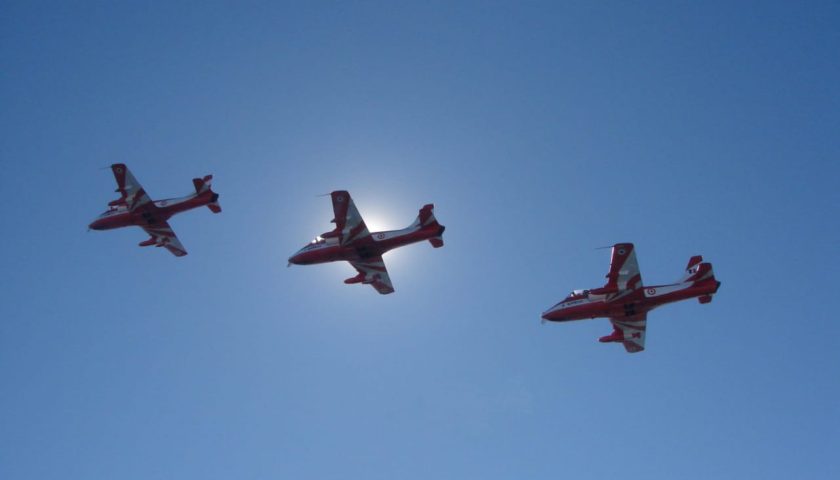
- The leader’s role is not only important but also critical. Can you explain/elaborate.
Ans. The leader is the key member in the display profile. He files the profile at the correct speeds, maintaining certain set parameters, announcing the commencement of individual manoeuvre. He is responsible for maintaining correct height, speed and maintaining the formation within the display box. The role of the leader is therefore very vital and it sets the tone.
The other members are mainly responsible for maintaining their close formation position with respect to their respective members.
- What are the different manoeuvres that are carried out during the display profile? What indications or signals are given during commencement of a manoeuvre or changing formations?
Ans. There are various formations in a nine aircraft or in a six aircraft formation which are mostly flown during public displays. A formation change is carried out for ease for executing a manoeuvre. For example, a barrel roll is best executed in a nine aircraft diamond formation which is a compact and tight formation. Commencement of a manoeuvre and formation changes are ordered by the leader. During these changes, the members who change position acknowledges on Radio and change position to the new formation. Formation changes are also for exhibiting flying skill and is generally accompanied with smoke emission, for the change to be visible to the audience. Formation changes require corresponding members on either side to change position simultaneously and at the same rate so as to make the change look synchronous. These are well-rehearsed, practised and debriefed extensively.
- What are the hazards and risks involved during formation aerobatics? What precautions are observed?
Ans. Flying itself is inherently dangerous and formation aerobatics more so, since all aircraft are in such close proximity. There have been many unfortunate accidents and incidents involving aerobatic teams all over the world. Some have been due to technical malfunctions but most of them have been attributed to human error. In SKAT as well there have been a few fatal accidents. Even I myself have been involved in two incidents, The first one was a technical failure. We were doing the final display for National Defense Academy passing out in December 2001 when as the left outer I had a booster pump failure. At this stage, the formation was rolling in for a vixen break which is a manoeuvre where all aircraft split horizontally. I announced to the leader and asked him to make it the last manoeuvre. Thereafter the formation recovered at Pune as planned and I landed last. The second one was a mid-air collision. We were doing a nine aircraft practice mission where I was flying as the number 9. During one of the formation changes the number 5 came to my position mistakenly and we had a mid-air collision. Thankfully both aircraft were fly worthy and we landed safely.
There are set contingency procedures for failures however not every eventuality can be briefed for and rehearsed. These are normally referred to as occupational hazards. Certainly, there are risks involved however, there is adequate training for coping with these emergencies or failures.
Aerobatics is 3D freedom, formation aerobatics is sport of kings and formation keeping is playing for keeps.
So if you feel motivated, do not miss the opportunity to watch them live whenever SKAT is performing in your city or close by. You are never given a wish without also being given the power to make it come true. I am dedicating this post to all the team members of Surya Kiran for whom the sky is not the limit in the quest for excellence.
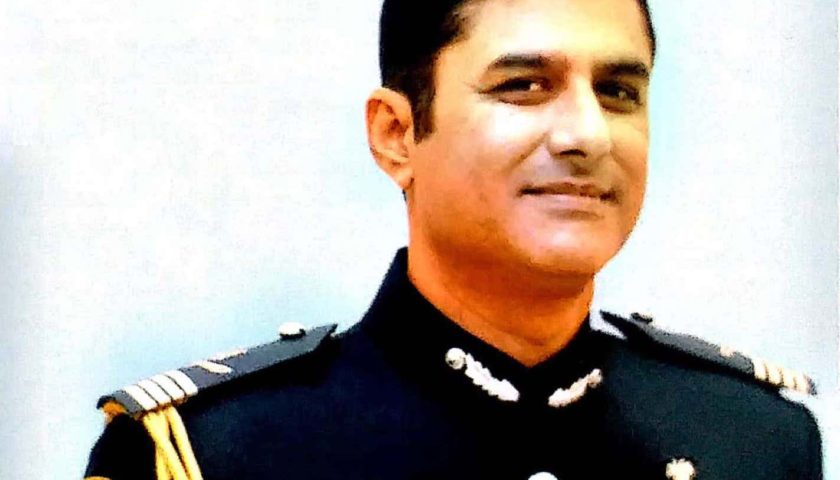
Gp Capt (Retd) Sanjiv Sethi was commissioned into the IAF in June 1991. An Ex-NDA officer he was commissioned into the fighter stream. After completing MOFT training he was posted to a Mig-21 Sqn. He then converted to the Jaguar. The officer was Flight Commander in Mig-21 Squadron and commanded a Jaguar Squadron. He was part of the SKAT team for more than 4 years from 2001 to 2005. He initially flew as the left outer number 5 and then shifted as the number 9, the Synchro leader and was also the Deputy leader for the last one year. Was selected to undergo the staff course at the UK in 2007 where he earned his M.A from Kings College London. He was the COO at AF Stn Ambala and his last posting was at Rashtrapati Bhavan where he was the Deputy Military Secretary to President Pranab Mukherjee. He is married to Deepika and blessed with two daughters.
Related Article: Flypasts. Click here to read.


